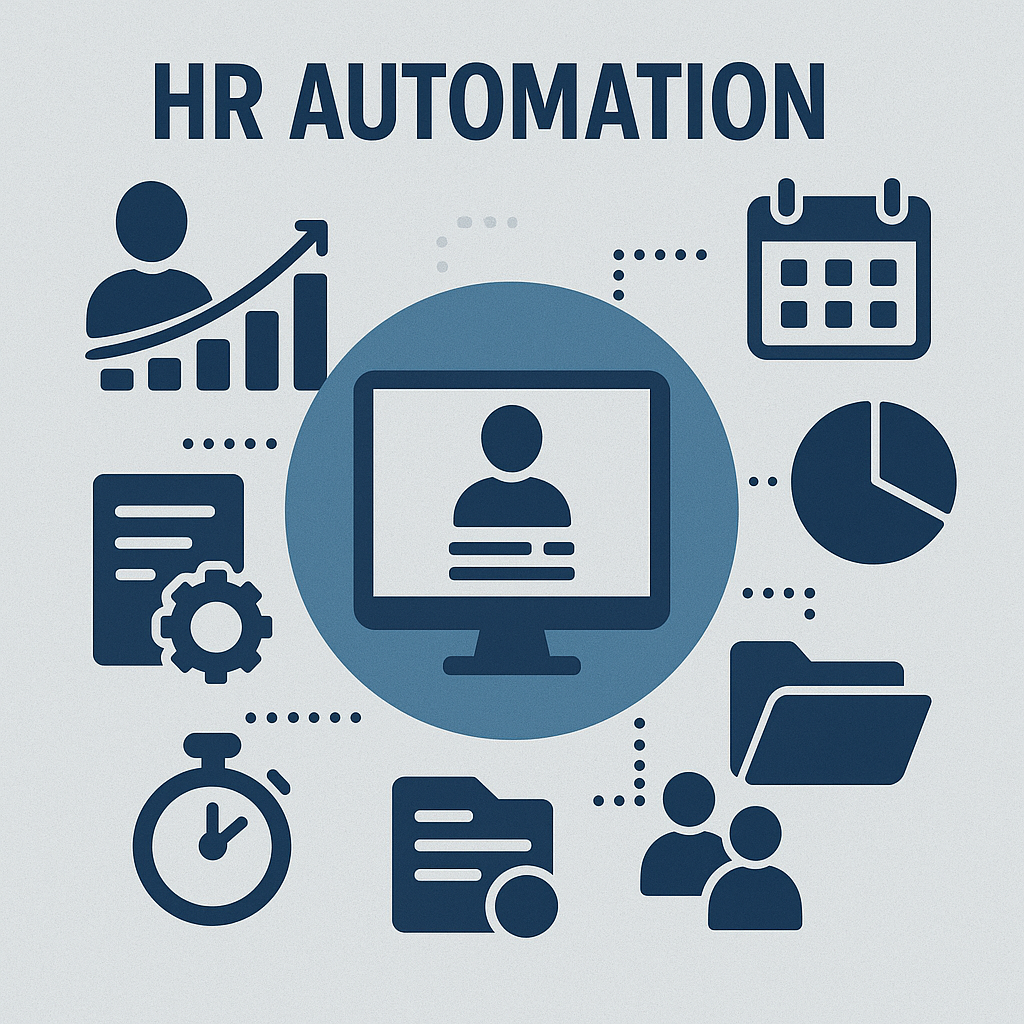Running a small business in 2025 means juggling a lot, especially when it comes to HR. From hiring new talent to managing payroll and keeping your team engaged, it can feel overwhelming. But what if the right data could unlock the power of HR automation to save you time, cut costs, and boost efficiency? In this blog post, we’ll explore how using key data can automate your HR processes and help your business thrive. Let’s dive in!
Why HR Automation Matters in 2025
Manual HR tasks can drain your time and resources, leaving little room for growth. Automation powered by the right data—think employee records, performance metrics, and applicant details—takes the burden off your shoulders. Studies show that businesses using data-driven HR automation can reduce administrative time by up to 50% and improve decision-making, making it a must-have for small businesses looking to scale (Deel HR Automation Trends 2025).
5 Ways HR Automation Uses Data to Transform Your Business
1. Streamline Hiring with Applicant Data
Automating the hiring process starts with collecting and analyzing applicant data, such as resumes, application forms, and interview feedback. This data helps filter candidates based on skills, experience, and fit, speeding up the selection process. With the right data inputs, you can prioritize top talent without sifting through stacks of paperwork, saving hours of manual review.
2. Enhance Onboarding with Employee Information
Onboarding new hires can be a breeze when you use data like personal details, contract terms, and compliance requirements. Automating this process with structured employee data ensures new team members receive digital forms, training schedules, and welcome packets seamlessly. This not only saves time but also sets a positive tone from day one.
3. Simplify Payroll with Financial and Attendance Data
Payroll automation relies on accurate data, including hours worked, tax details, and employee deductions. By inputting this data into an automated system, you can calculate salaries, process taxes, and handle direct deposits without errors. This reduces the risk of compliance issues and frees up hours each month for more strategic tasks.
4. Boost Engagement with Feedback and Performance Data
Keeping your team engaged requires understanding their needs, which comes from data like survey responses and performance feedback. Automating regular check-ins with this data helps you spot trends, address concerns early, and improve morale. Data-driven insights can lead to a 21% increase in profitability by fostering a connected workforce (Gallup Employee Engagement).
5. Improve Performance Reviews with Historical Data
Performance reviews benefit from historical data, such as past performance metrics, goal progress, and feedback notes. Automating this process with the right data inputs allows you to schedule reviews, track progress, and store feedback in one place. This ensures fair evaluations and helps you make informed decisions about promotions or training needs.
Real-World Example: How It Works
Imagine you run a small e-commerce business with 20 employees. Here’s how data-driven HR automation can help:
- Hiring: You collect applicant data (resumes, interview scores) and use it to automatically shortlist candidates based on your criteria.
- Onboarding: Employee data (contact info, contract terms) is used to generate digital onboarding packets and checklists for new hires.
- Payroll: Attendance data and tax details are processed to automate monthly payroll, ensuring accuracy and compliance.
- Engagement: Feedback data from weekly surveys is analyzed to address team concerns proactively.
- Performance Reviews: Historical performance data triggers automated review schedules, making evaluations efficient and data-backed.
This system leverages your existing data to create a smooth HR workflow, letting you focus on growing your business.
Benefits of Data-Driven HR Automation for Small Businesses
- Time Savings: Automating data-heavy tasks frees up hours for strategic planning.
- Cost Reduction: Minimizes errors and compliance risks, lowering operational costs.
- Improved Efficiency: Streamlines processes with accurate, organized data.
- Enhanced Employee Experience: Provides self-service access to data like pay stubs or training schedules.
- Data-Driven Decisions: Uses insights from employee and performance data to guide HR strategies.
- Scalability: Handles growth without a proportional increase in HR workload.
Conclusion
HR automation in 2025, powered by data like employee records and performance metrics, is a game-changer for small businesses. By using this data to automate hiring, onboarding, payroll, engagement, and reviews, you can save time, cut costs, and make smarter decisions. Ready to transform your HR processes? Book a free consultation with gentscale today to discover how tailored automation solutions can help your small business scale smarter and faster.
Have Any Project?
Lets Talk & Grow Your Business
We’re ready to help you. Our expert is here, just send a message.
FAQ
HR automation refers to the use of technology and software to automate human resources ruitment, payroll, emloyee data management, and performance reviews.
It saves time, reduces human errors, lowers costs, improves data accuracy, and allows HR team to focus on stragetic tasks like employee development
Recruitment, onboarding, payroll, leave management, and employee feedback are typical areas for automation
No, it supports HR teams by handling repetitive tasks, allowing employees to focus on personal interactions and stragetic topics
Popular tools include Workday, BambooHR, SAP and ADP workforce. If you seek a custom solution – feel free to reach out to us.

